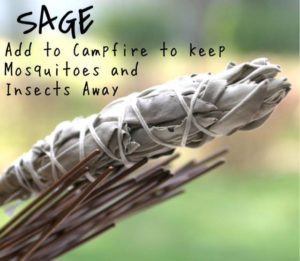Herbs for Repelling Insects

Herbs were our original household cleaners, disinfectants, and bug repellents! They were used with good results before humans came up with toxic chemicals. Herbs are better for the environment and continue to work for you when you put them in the compost heap. They enrich soil, add nutrients, and some like valerian attract earthworms.
1. Basil Delicious in pesto, tomato dishes, and salads. It is one of the best ways to keep flies out of your house. Plant basil next to the doors or use as a foundation planting mixed in with flowers. Flies will stay far away. Mosquitoes don’t like it either.
2. Bay Leaf Grow bay outside in S.C. Buy dried bay leaf if you are unable to grow it; Dried basil works for keeping pests away. One bay leaf in white flour keeps weevils out and also protects barley, cornmeal, oatmeal, quinoa, and rice. Scatter a few leaves on shelves to repel moths, roaches, earwigs, and mice. Flies hate the smell of bay leaves.
3. Lavender Small amounts add a wonderful floral and citrus flavor to baked goods, meats, and vegetables. It repels moths, mosquitoes, and fleas. Hang a bundle in your closet or lay sprigs with the stored clothes. Grind and sprinkle on your pet’s bedding. It repels mosquitoes, keeps rabbits out of your lettuce and spinach.
4. Mint, catnip, and pennyroyal planted around the foundation of your house will keep ants and mice out. Pennyroyal is repugnant to fleas, ants, flies, and mosquitoes. Large amounts of pennyroyal can be toxic to pets and children.
5. Rosemary repels mosquitoes and keeps moths out of clothing..
6. Sweet Woodruff is used to deter carpet beetles and moths. Lay it beneath wool carpets. It releases a sweet scent when you walk across your rugs.
7. Tansy repels flies, ants, fleas, moths, and mice.

Five of the most effective mosquito repelling plants
1. Citronella is a common natural ingredient in mosquito repellents. The aroma is a strong smell that masks other attractants to mosquitoes. It is used in scented candles and torches. The living plant is more effective because it has a stronger smell. Citronella is a perennial ‘clumping’ grass, which grows to a height of 5 – 6 feet. It can be grown directly in the ground in climate zones where frost does not occur. Citronella plants are considered low maintenance.They do best in full sun and well-drained locations. When purchasing citronella, look for the true varieties, Cybopogon nardus or Citronella winterianus.
2. Horsemint (or Bee balm) is an adaptable perennial plant that gives off a strong incense-like odor that confuses mosquitoes by masking the smell of its usual hosts.
Horsemint is a fast growing, shade-tolerant and drought-resistant plant which reaches a height and width of 2 – 3 feet. It does well in dry, sandy soil and can tolerate salty conditions. It is often found in coastal and beach areas. Horsemint leaves can be dried and used to make herbal tea. Its flowers will also attract bees and butterflies to your garden.
3. Marigolds are hardy annual plants with a distinctive smell that mosquitoes find particularly offensive. Marigolds contain Pyrethrum, a compound used in many insect repellents. Marigolds prefer full sunlight and reasonably fertile soil. Potted marigolds can be positioned near entrances to your home and any common mosquito entry points, such as open windows. The smell may deter mosquitoes from going past this barrier. Besides repelling mosquitoes, marigolds repel insects that prey on tomato plants, so you may want to plant a few marigolds in your tomato bed for added protection.
4. Ageratum emits a smell which mosquitoes find particularly offensive. Ageratum secretes coumarin, which is widely used in commercial mosquito repellents.
Ageratum is a low-lying annual ornamental plant that will thrive in full or partial sun and does not require rich soil. It is often displayed in rock gardens where low-lying plants are favored. Although the leaves of Ageratum can be crushed to increase the emitted odor, it is not advisable to rub the crushed leaves directly on the skin.
5. Catnip is a natural mosquito repellent. Entomologists at Iowa State University reported to the American Chemical Society that catnip is ten times more effective than DEET, the chemical found in most commercial insect repellents. Catnip, Nepeta cateria, is very easy to grow. Some people apply crushed catnip leaves or catnip oil for more robust protection. Cats will respond to you similarly as they would respond to the plant itself. Cat owners may want to choose an alternative plant for repelling mosquitoes.
Many commercial insect repellents contain from 5% to 25% DEET. There are concerns about the potential toxic effects of DEET, especially when used by children. Children who absorb high amounts of DEET through insect repellents have developed seizures, slurred speech, hypotension and bradycardia.
 Mothballs
Mothballs
10 Tbsp dried lavender flowers
20 drops Lavender oil
20 drops Cedar Wood oil
5 pieces of fabric, cut into squares
Ribbon and scissors
In a bowl, combine lavender flowers with essential oil. Stir until lavender fully absorbs the oils. Transfer to a glass jar, cover and store for 24 hours. Spread each piece of fabric on a flat surface. Place 2 Tbsp of the lavender mix onto the fabric. Pull up the corners of the fabric, and tie your ribbon tightly around the loose edges to create a ball. Secure with a bow or knot and trim fabric. Tuck each ball between clothing layers inside your drawers. These homemade mothballs smell good, and they are effective.



 Mothballs
Mothballs